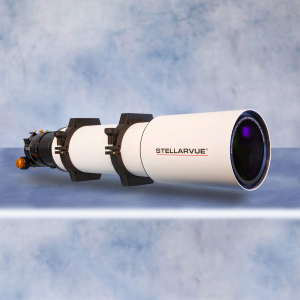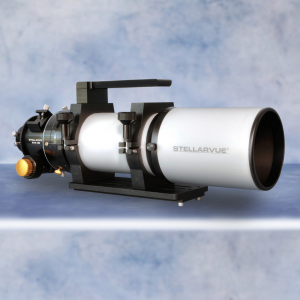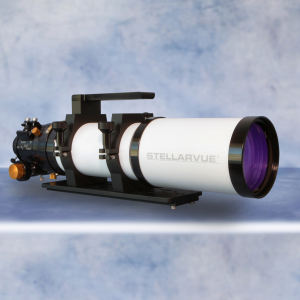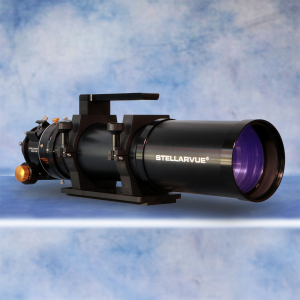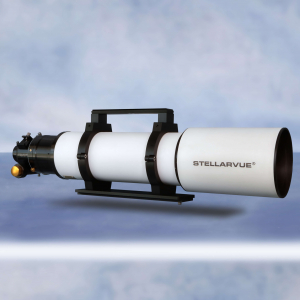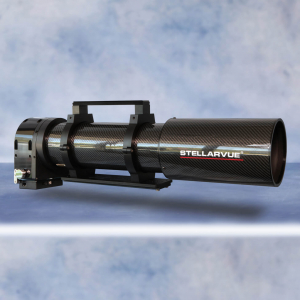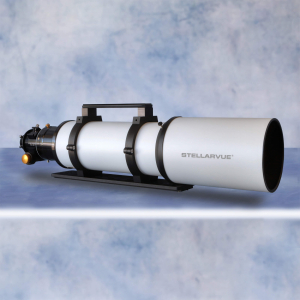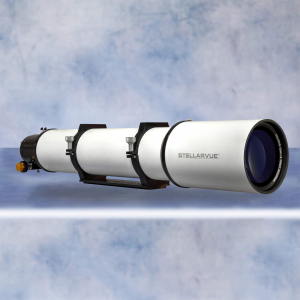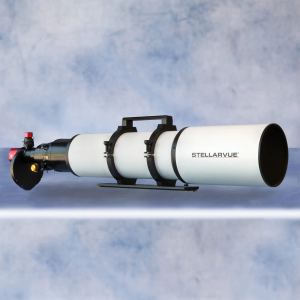SVX180T - The Crab
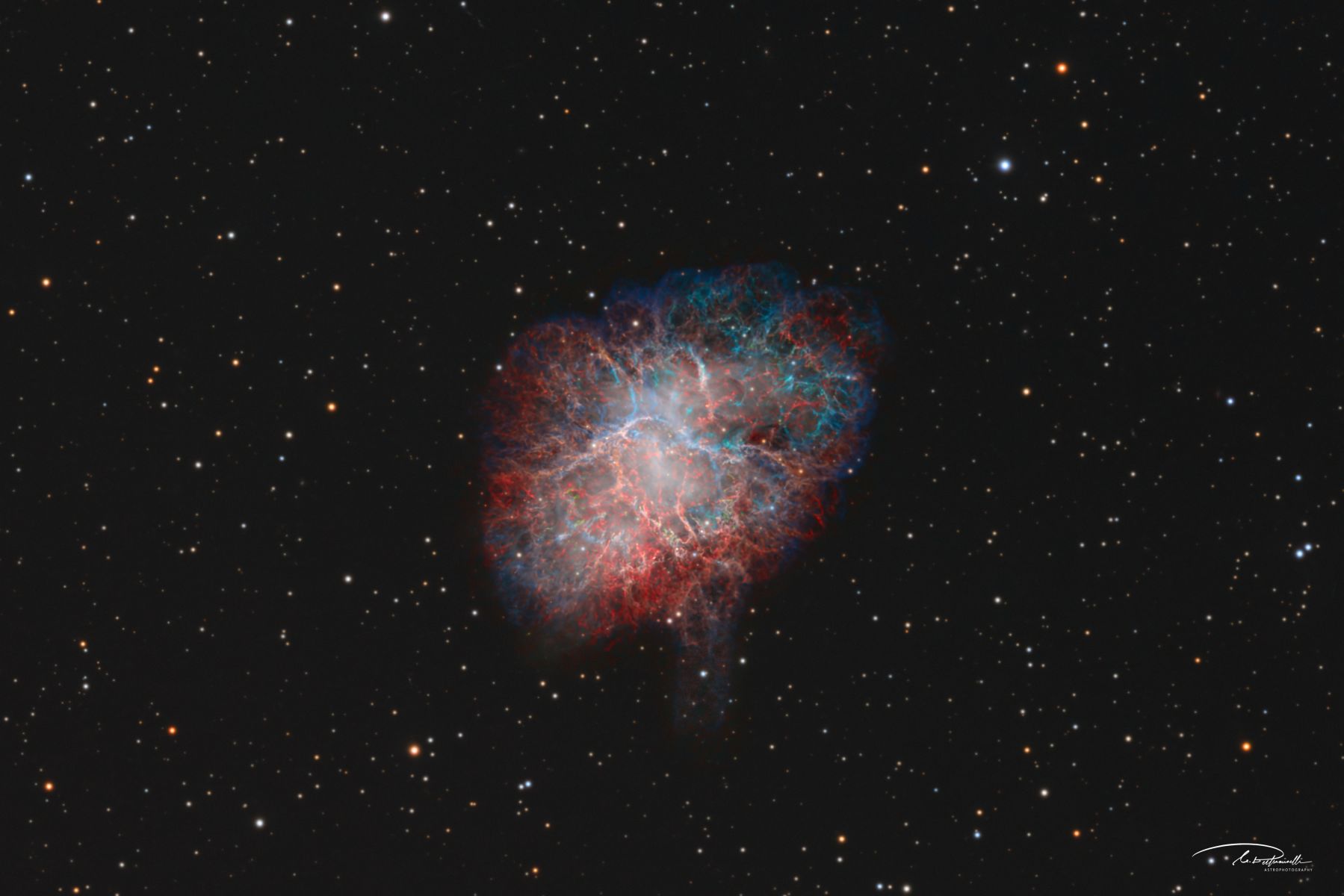

Nicola Beltraminelli captured this sublime image of the crab nebula (M1) in Taurus with his SVX180T. This supernova remnant and pulsar wind nebula lies in the Perseus arm of the Milky Way Galaxy and rests around 6,500 light-years away from Earth. With a diameter of roughly 11 light-years, it is expanding at a rate of about .5% of the speed of light. At its center is a neutron star approximately 19 miles across called the Crab Pulsar, which emits pulses of radiation from gamma rays to radio waves.
References:
Wikipedia contributors. (2024, February 1). Crab nebula. Wikipedia. https://en.wikipedia.org/wiki/Crab_Nebula
Salvatore Iovene - http://iovene.com/. (n.d.). M1 in L-SHO with RGB stars. AstroBin. https://www.astrobin.com/0ioip3/B/
According to Nicola:
"The Crab Nebula is a very renown supernova remnant and pulsar wind nebula in the constellation of Taurus. The common name comes from a drawing that somewhat resembles a crab with arms produced by William Parsons, 3rd Earl of Rosse, in 1842 or 1843 using a 91 cm telescope. The nebula was discovered by English astronomer John Bevis in 1731. It corresponds with a bright supernova recorded by Chinese astronomers in 1054 as a guest star. The nebula was the first astronomical object identified that corresponds with a historically observed supernova explosion (source Wikipedia)."
"The objective of this project was to obtain a detailed version of M1 by taking advantage of one end of the narrow band filters to show the emission filaments of the nebula, and from the other to use the total light to illustrate the entire nebula. As a matter of fact, although the filaments shown by the narrow band filter enable us to appreciate the beautiful gas complexity, the core brightness is predominantly emitting at all wavelengths. From my perspective cutting the light from the core impairs the representativity of what this nebula contains. I therefore tried to combine layers from Ha, SII and OIII emissions, as well as from total light, that I used as a luminance layer at 80%. Using this combination, I noticed that the nebula achieved a better 3D impression with slightly less sharp filaments than with a pure SHO version."
"To maximize the resolution, I kept only the raw images with the best HFR values. Down to practice I rejected >70% Ha images (very unstable nights...), 30% of SII, 30% of OIII and 20% of L subs. During the pre-processing I drizzled all the stacks 2-fold. The objective was not to gain details, but to enable an easier appreciation at 100%. I applied BXT 070 for sharpening and Denoised exclusively the S, H, O layers (not the L)."
"About the processing, conversely to the usual practice, I associated Red to Ha, Green to SII and blue to OIII. I equilibrated the colors with the "selective color function" in PS. The stars were calibrated with SPCC."
This image was awarded Image of the Day on AstroBin. Check it out there for more details and an in-depth look.
Imaging Telescopes or Lenses:
Imaging Cameras:
ZWO ASI6200MM Pro
Mounts:
10Micron GM2000 HPS II
Filters:
Chroma Blue 50 mm Chroma Clear 50 mm Chroma Green 50 mm Chroma H-alpha 3nm Bandpass 50 mm Chroma OIII 3nm Bandpass 50 mm Chroma Red 50 mm Chroma SII 3nm Bandpass 50 mm
Software:
Adobe Lightroom Classic Adobe Photoshop Pleiades Astrophoto PixInsight Russell Croman Astrophotography BlurXTerminator Stefan Berg Nighttime Imaging 'N' Astronomy (N.I.N.A. / NINA)

